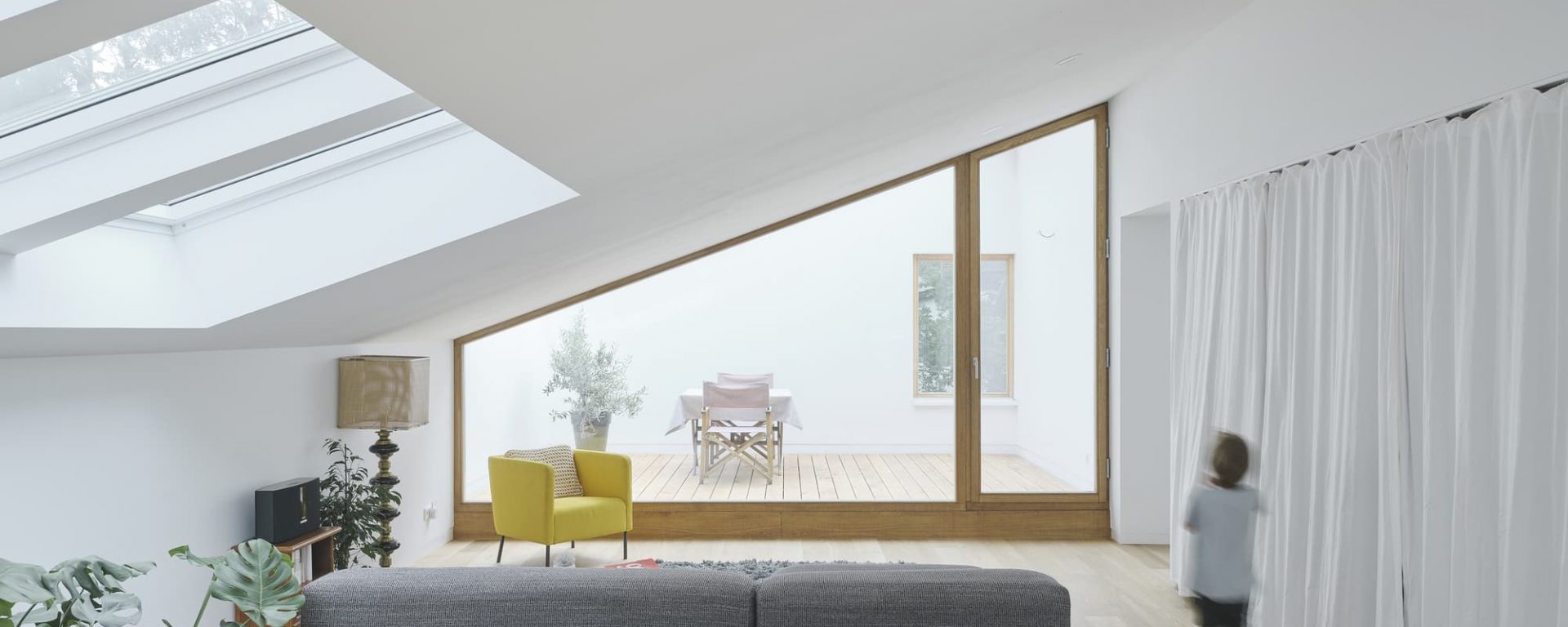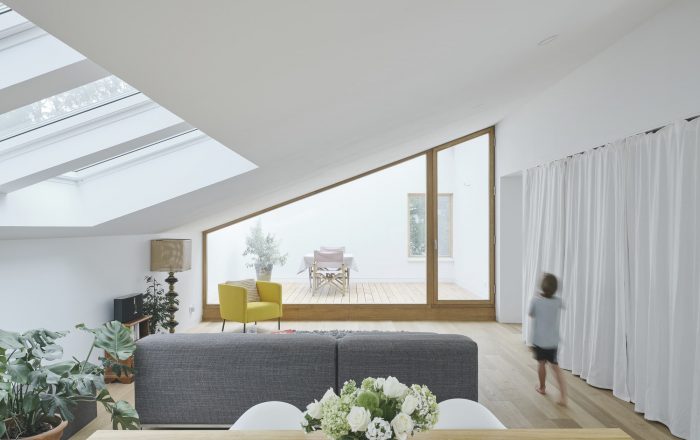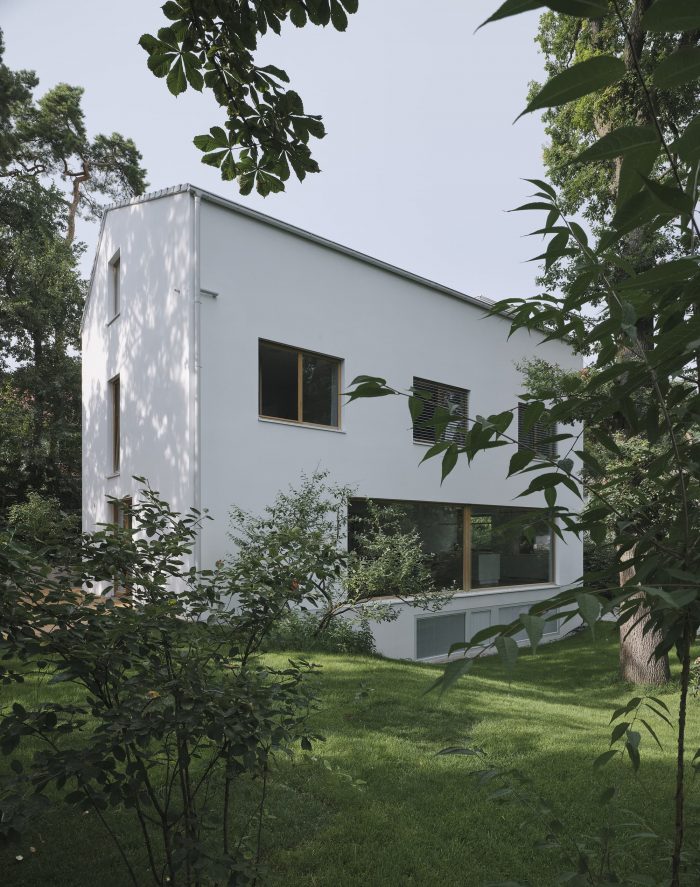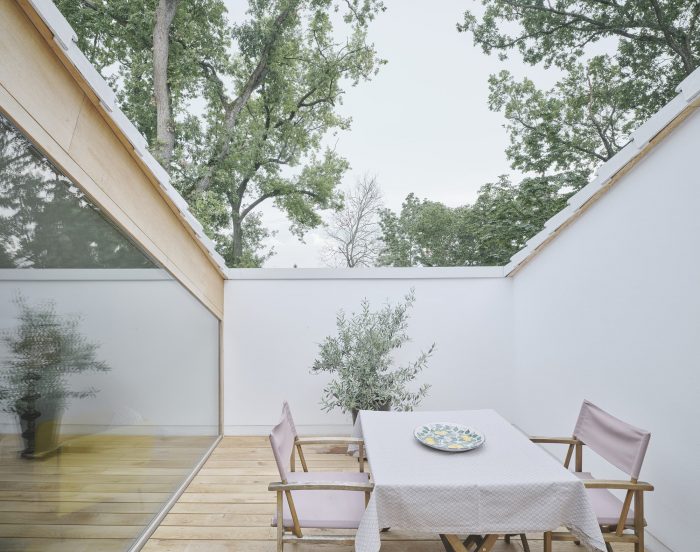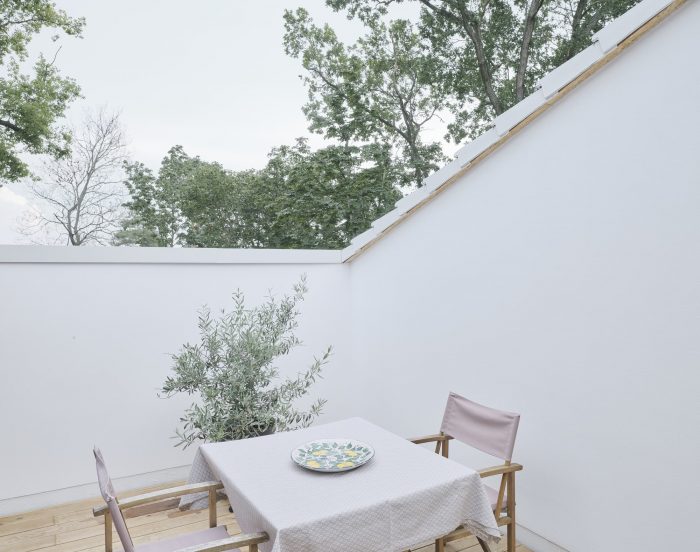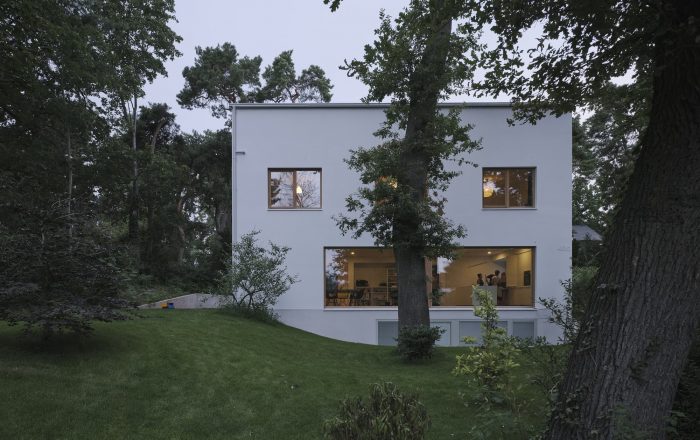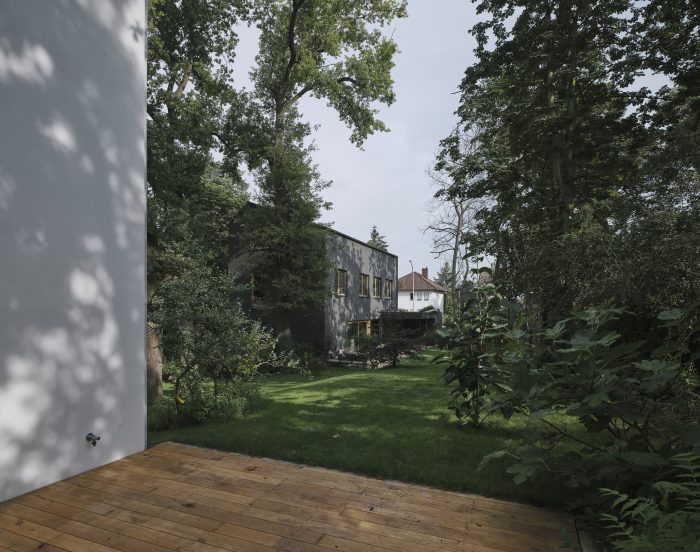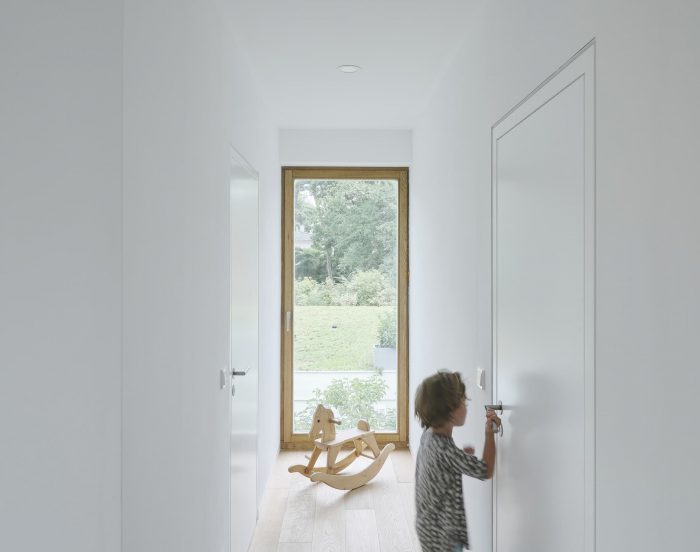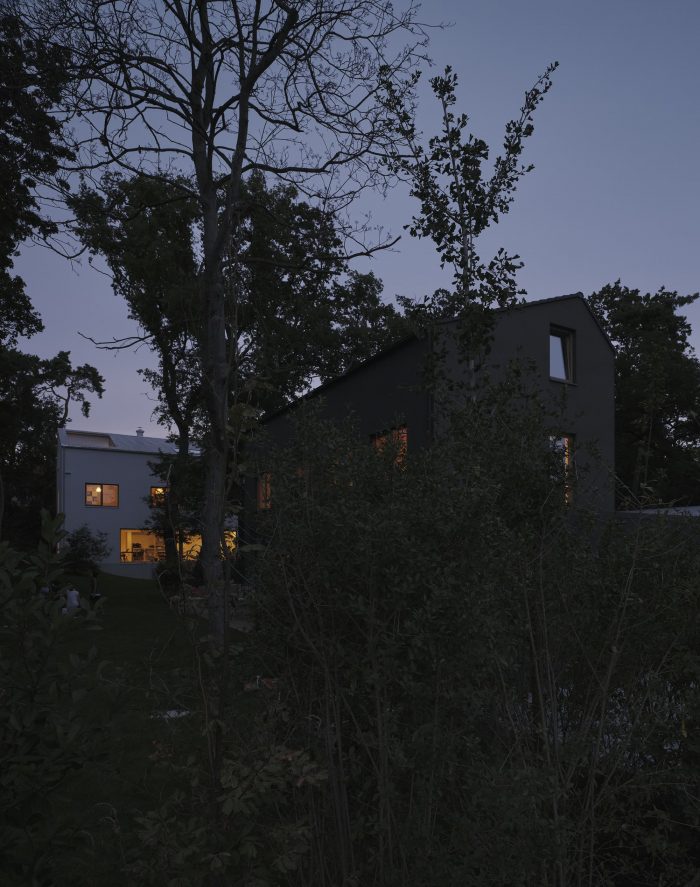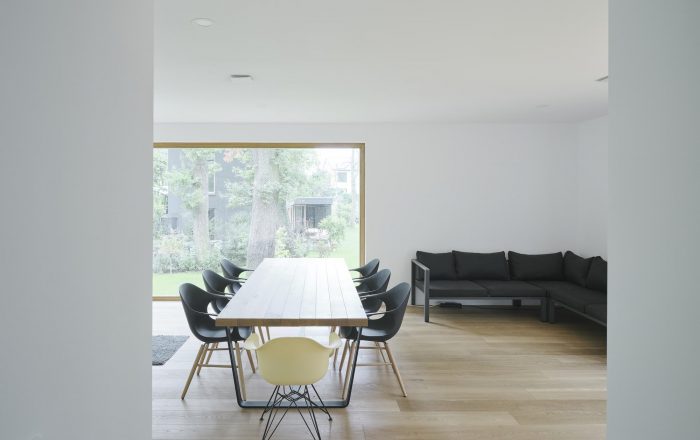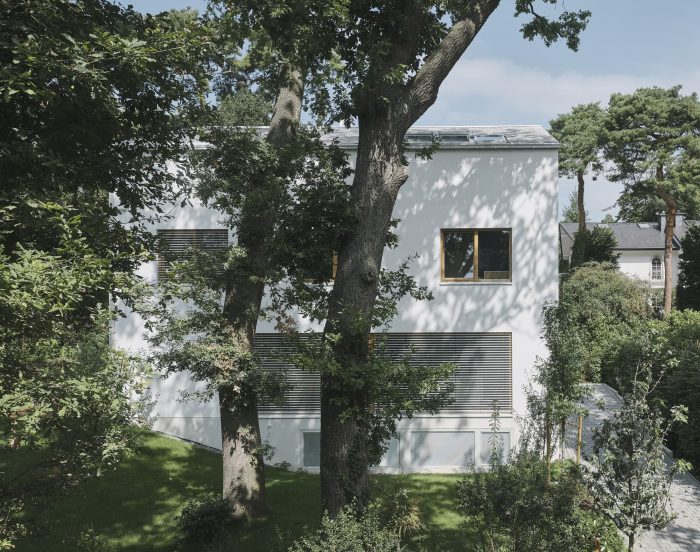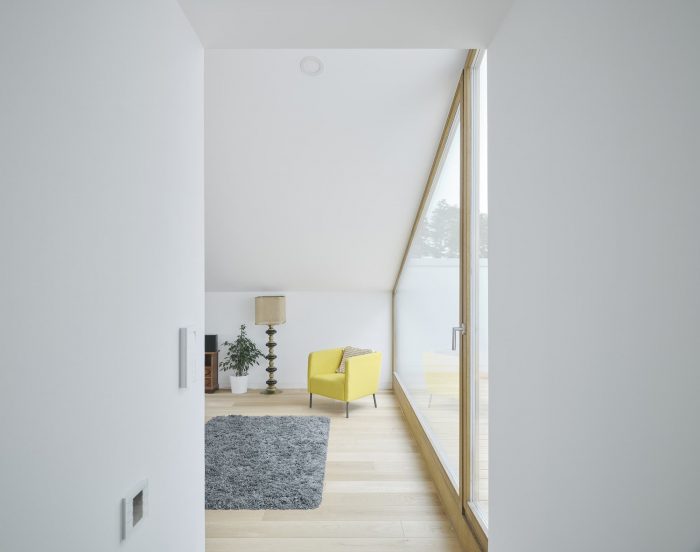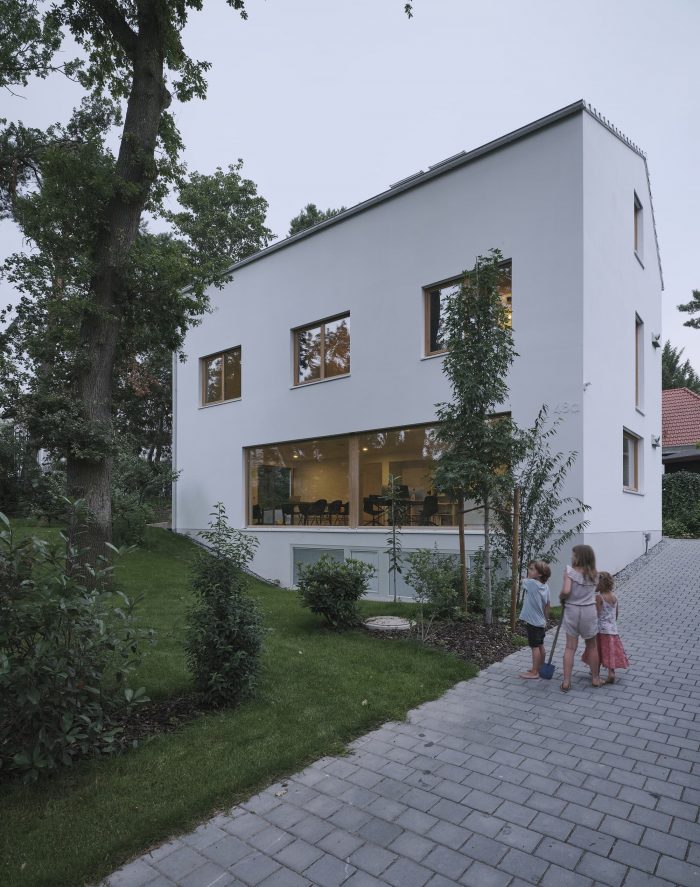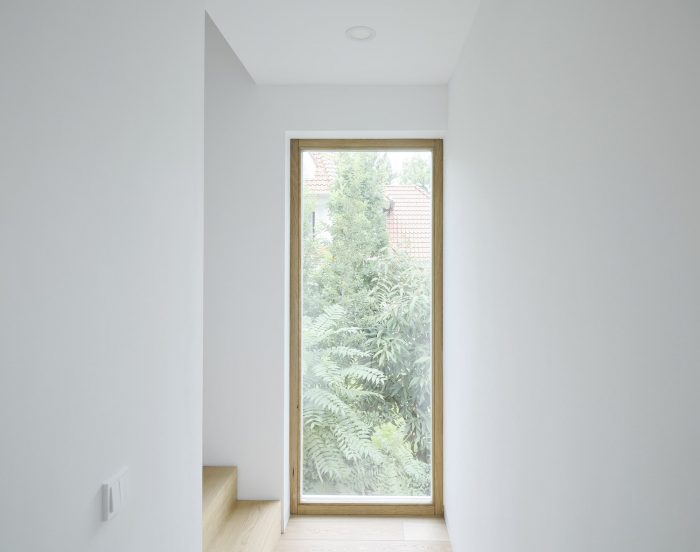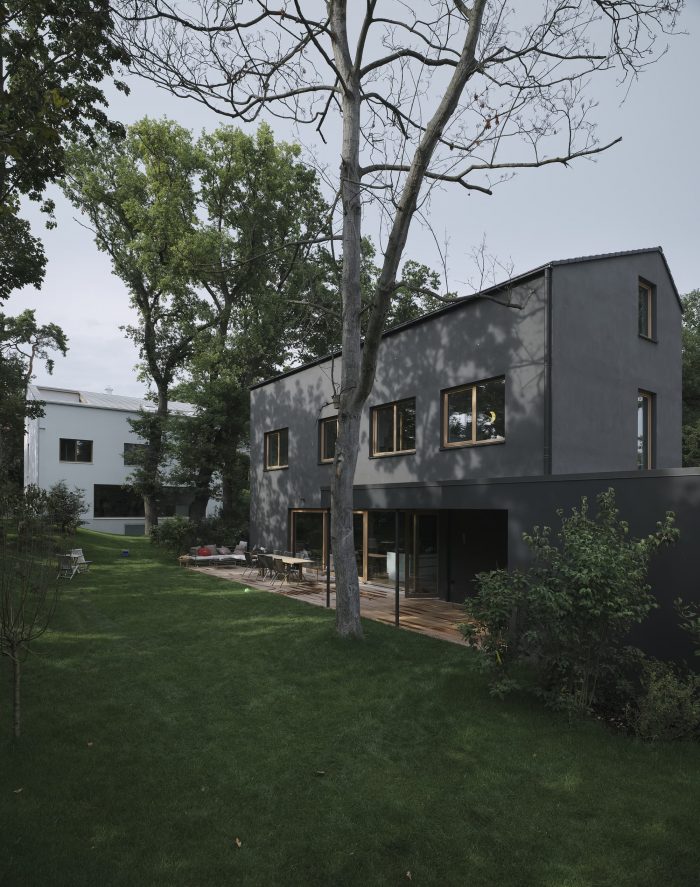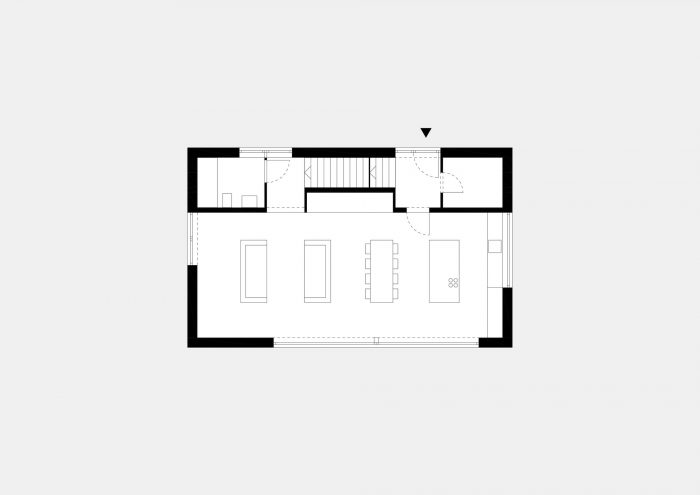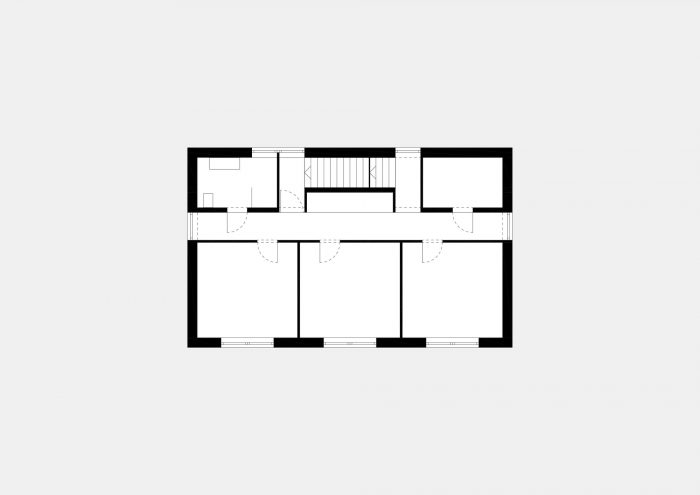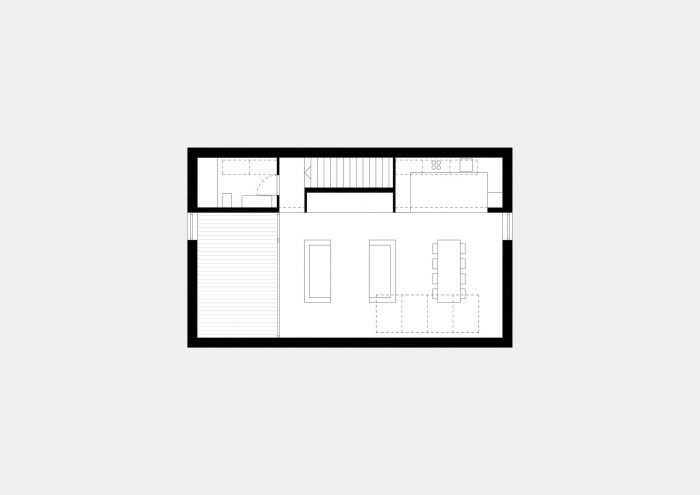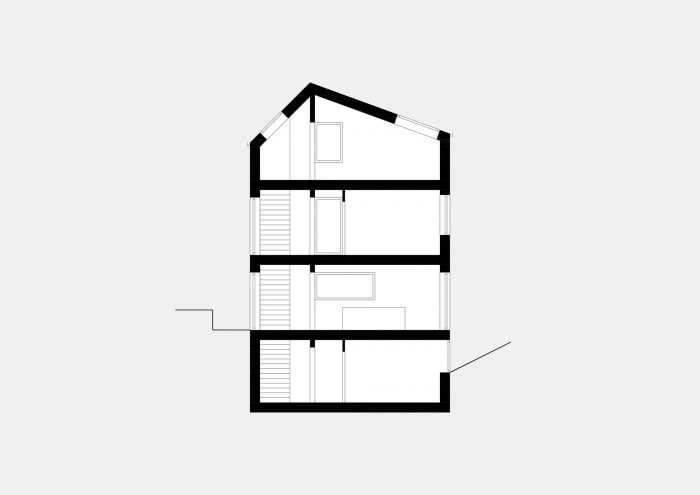白房子 “是由两座住宅楼组成的建筑群的一部分,位于 “Waldvillenviertel”,是美因茨市的一个受欢迎的郊区。除了允许的建筑密度,倾斜的屋顶形状也是该地块的建筑要求之一。房屋的布局使花园得到了愉快的使用,并照顾到了现有的橡树和松树的植被,并考虑到了现有的场地地形。
The “White House“ is part of an architectural ensemble of two residential buildings, located in the “Waldvillenviertel“, a popular suburban district in the city of Mainz. Besides the admissible building density, a sloped roof shape was one of the building requirements on the plot. The layout of the house enables a pleasant usage of the garden and takes care of the existing vegetation with its oaks and pine-trees and regards the existing site topography.
白房子包含两个独立的居住单元,其中一个用作建筑办公室和周末客户的藏身之处。该建筑的内部组织被清晰地划分为一个开放区域和一个缓冲区,包含技术、卫生和存储空间,为一楼的烹饪、饮食和生活提供了宽敞的空间。最大化的玻璃窗在视觉上将生活空间与花园连接起来。
The White House contains two separate dwelling units, one is used as an architecture office and hideout for the clients on the weekend. Clearly divided to an open plan area and a buffer zone, containing technical, sanitary and storage space, the inner organization of the building offers a generous space for cooking, eating and living on the ground floor. The maximized glazing connects the living space to the garden visually.
与上层密集的独立房间相比,阁楼被设计成一个宽敞的空间,屋顶的窗户使光线充沛。非凡的玻璃窗为内向的屋顶天井提供了舞台。在这里,你可以在橡树的树梢上放松。屋脊的不对称位置反映了内部组织与伸展的分隔墙。建筑师决定用白色的屋顶瓦片覆盖屋顶,并与外墙的颜色相融合,以尽可能地获得房屋的整体外观。承重墙是用隔热砖建造的。
In contrast to the dense upper floor with individual rooms, the attic story is designed as a generous space, light-flooded with roof windows. The extraordinary glazing stages the introverted roof patio. Here, you can relax among the treetops of the oaks. The asymmetrical position of the ridge reflects the inner organization with the stretched dividing wall. The architects decided to cover the roof with white roofing tiles and blend in the color of the facade to gain a monolithic appearance of the house as much as possible. Load-bearing walls were constructed with insulating bricks.
窗框、镶木地板和露台是由橡木制成的。建筑细节被开发为一种优化的标准细节,以满足所需的整体外观。一个燃料电池确保了房子的高能量标准。嵌入绿色环境中的黑色和白色房屋之间的张力代表了社区,通过强烈的视觉对比实现了矛盾。两座房子之间现有的三棵橡树构成了引人注目的建筑组合的新核心。
The window frames, the parquet floor, and the terraces are made of oak. The construction details were developed as a kind of optimized standard details with regard to the desired monolithic appearance. A fuel cell ensures a high energetic standard of the house. Embedded into a green environment the intended tension between the black and the white house represents the community, paradoxical achieved by a strong visual contrast. The three existing oak-trees between the two houses form the new heart of the eye-catching architectural ensemble.
Architects: Christian Stock, HGA Henning Grahn Architektur, Marc Flick Architekt BDA
Area : 317 m²
Year : 2019
Photographs :David Schreyer
Manufacturers : AutoDesk, VELUX Group, Wienerberger, Adobe, Kartel, Monier, Trimble, Vola, Wever & Ducre
Consultants : Ingenieurbüro Ries, Henn Planungswerkstatt
Engineering : Ahrens Ingenieure
Collaborators : Trinova GmbH, Schreinerei Vivendi
City : Mainz
Country : Germany

